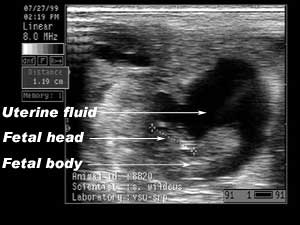The utilization of advanced reproductive management techniques can be a useful tool to improve performance of a more closely managed herd. However, additional inputs may be needed in labor and handling facilities.
Buck effect
Exposing non-cycling females to intact or sterile bucks, following a period of isolation, has been demonstrated to induce estrus and ovulation in the doe. The physiological basis for this response is partly due to smell and partly due to sight, with neither stimulus completely accounting for the response. The buck-induced estrus is usually synchronized, with ovulation occurring within 2-3 days of stimulation. The response to buck stimulation can be quite variable and is influenced by breed, season of the year, completeness of prior isolation, nutrition and stage postpartum. Unless male-induced estrus activity is initiated preceding the natural breeding season the response is temporary in nature, and the doe will return to anestrus. Hence the practical application of the ‘buck effect’ lies primarily in initiating breeding season early, or in combination with some drug-induced out-of-season breeding manipulation.
Controlled lighting
Controlled lighting can be used to manipulate the breeding season in goats. Artificial lighting is mostly employed for ‘long day’ simulation, administered as 16 hours of daylight followed by 8 hours of darkness. To simulate long days it is not necessary to provide the entire 16-hour light period, but treatment can be divided into the natural daylight period followed by an appropriately timed 1 hour light stimulus at the time of desired dusk. Most practical systems have focused on the extension of the natural breeding season, combining a period of long days followed by short day simulation. Use of controlled lighting requires the availability of a light proof barn to house the goats.
Pregnancy testing
The early determination of pregnancy can be a useful management tool to identify open females for culling, and/or allow the separation of pregnant and open females for differential management. When fetal numbers can be determined as part of the pregnancy diagnosis, different feeding regimes can be applied to single and multiple litter bearing females to optimize nutritional management. To be most useful to the producer, pregnant animals need to be identified as early as possible in gestation.
The most practical approach to pregnancy testing is the observation of mating activity during the breeding season to identify repeat breeders. This can be extended beyond the scheduled breeding season through the use of a sterile harnessed teaser male to identify does that are returning to estrus. The effectiveness of this approach is dependent on the accuracy with which observations are made and libido of the male. Other simple farm-based techniques are associated with the detection of physical changes resulting from pregnancy through palpation (fluid accumulation and presence of a detectable fetus), but are applicable only during the late stages of pregnancy.
Other techniques require specialized equipment (ultrasound scanner) or the analysis of blood or urine samples for hormonal and metabolic signals associated with pregnancy in commercial labs. The arrival of lower cost, portable veterinary ultrasound scanners, combined with the advantages of their use (fetal number determination, minimal animal restraint, high throughput), has made the application of this technology more widely available, and in some instances economically feasible on the farm level. Abdominal scanning allows reliable pregnancy diagnosis at 35 days of gestation, whereas transrectal scanning is effective as early as 25 days. Using ultrasonography, fetal dimensions can be measured to allow aging of the fetus and predict time to parturition.

Next
Module Home
Certification Table of Contents
Browsing Table of Contents
